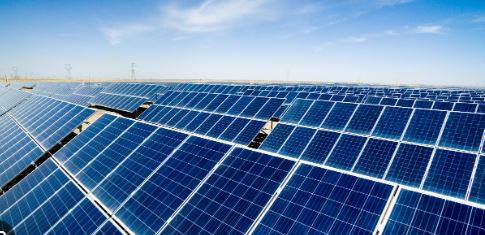In a testament to the nation’s commitment to a cleaner, greener future, India has achieved a historic milestone by surpassing 100 GW of installed solar power capacity, reinforcing its position as a global leader in renewable energy, the government said on Friday.
As of January 31, India’s total solar capacity installed stands at 100.33 GW, with 84.10 GW under implementation and an additional 47.49 GW under tendering.
This remarkable achievement marks a significant step toward realising the ambitious target of 500 GW of non-fossil fuel-based energy capacity by 2030 set by Prime Minister Narendra Modi.
“India’s energy journey over the past 10 years has been historic and inspiring. Initiatives like solar panels, solar parks, and rooftop solar projects have brought about revolutionary changes,” said Union Minister of New and Renewable Energy, Pralhad Joshi.
“As a result, today India has successfully achieved the target of 100 GW of solar energy production. In the field of green energy, India is not only becoming self-reliant but is also showing the world a new path,” the minister emphasised.
The PM Surya Ghar Muft Bijli Yojana is making rooftop solar a household reality and is a game-changer in sustainable energy, empowering every home with clean power.
Launched in 2024, the scheme is nearing 9 lakh rooftop solar installations, enabling households across the country to embrace clean energy solutions.
The country’s solar power sector has witnessed an extraordinary 3,450 per cent increase in capacity over the past decade, rising from 2.82 GW in 2014 to 100 GW in 2025.
The country’s hybrid and round-the-clock (RTC) renewable energy projects are also advancing rapidly, with 64.67 GW under implementation and tendered, bringing the grand total of solar and hybrid projects to 296.59 GW.
Solar energy remains the dominant contributor to India’s renewable energy growth, accounting for 47 per cent of the total installed renewable energy capacity.
According to the minister, in 2024, record-breaking 24.5 GW of solar capacity was added reflecting a more than two-fold increase in solar installations compared to 2023.
Last year also saw the installation of 18.5 GW of utility-scale solar capacity, a nearly 2.8 times increase compared to 2023. Rajasthan, Gujarat, Tamil Nadu, Maharashtra, and Madhya Pradesh are among the top-performing states, contributing significantly to India’s total utility-scale solar installations.
The rooftop solar sector in India witnessed remarkable growth last year, with 4.59 GW of new capacity installed, reflecting a 53 per cent increase compared to 2023.
India has also made significant strides in solar manufacturing. In 2014, the country had a limited solar module production capacity of just 2 GW.
Over the past decade, this has surged to 60 GW in 2024, establishing India as a global leader in solar manufacturing.
“With continued policy support, India is on track to achieve a solar module production capacity of 100 GW by 2030,” the minister said.
–IANS




















